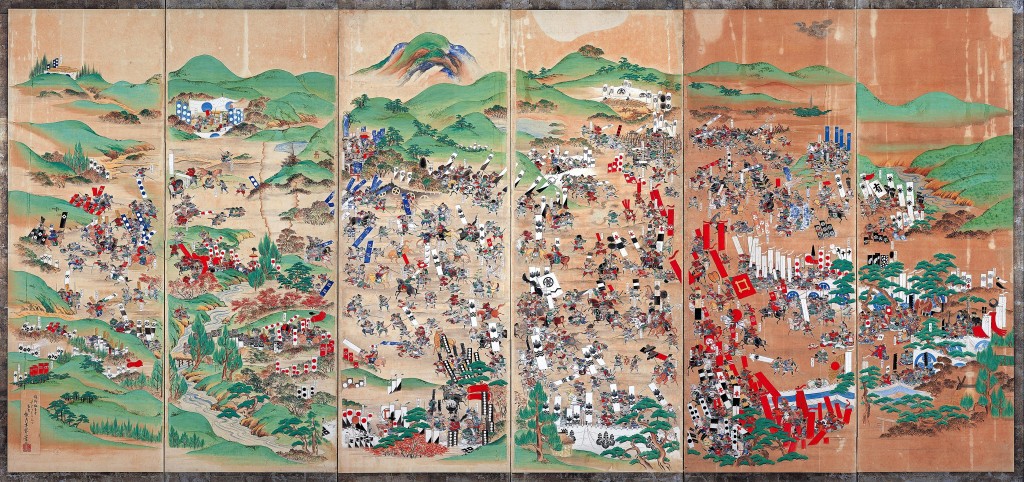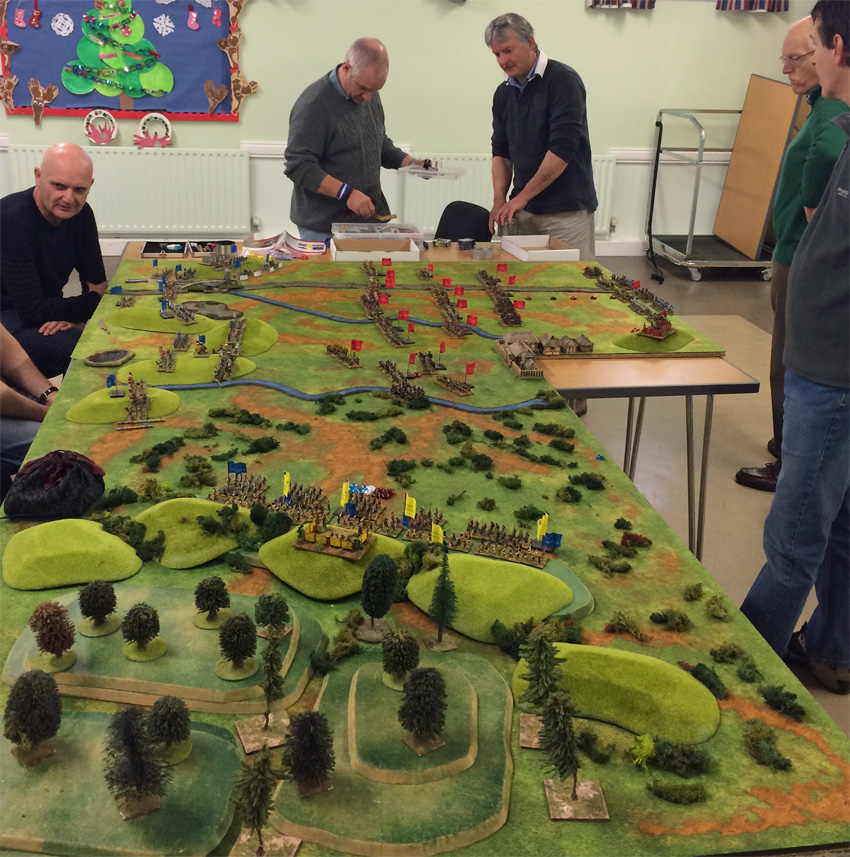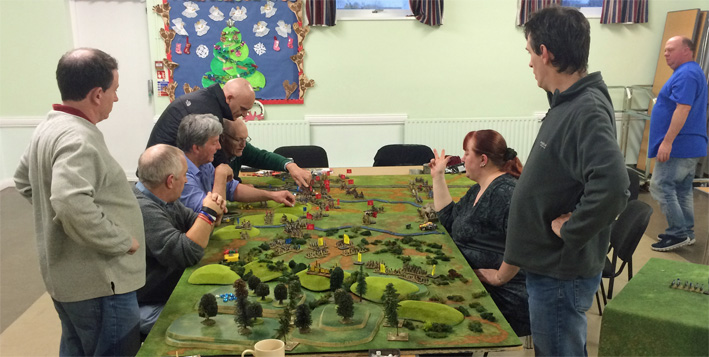In 1704 the Swedish territory of Ingria (South of Finland on the Baltic coast) fell to the Russians. They planned to take another Swedish Baltic territory, Courland, in their 1705 campaign.
The main Swedish army under Charles XII was quartered well to the south around Warsaw with only around 9000 men under Major General Lewenhaupt left to garrison the whole of Courland. The Russians organized an invasion force under Field Marshal Sheremetev with the aim of cutting Lewenhaupt off from the main Swedish base at Riga and bringing him to a decisive battle. The force comprised 9 dragoon regiments (7000 men), 3 infantry regiments (3000), irregular Cossack cavalry (300), 6 light guns and 10 howitzers.
Collecting as many men as he dare from various garrisons in Courland Lewenhaupt put together a force of around 7000 (approx. 4500 infantry and 2500 cavalry) . He requested reinforcements from Riga and was given an extra 1000 infantry in a combined regiment. The Swedish forces eventually gathered around the town of Gemauerthof. The Russians, encouraged by a series of successful raids and skirmishes, were eager to engage. They marched to cut off the main road to the north, putting themselves between Lewnhaupt and his escape route to Riga.
The Swedish command were also keen to engage the enemy, and decided to hold their strong defensive position against an expected Russian assault. Their left flank was secured by the wide but fordable River Schwedt and their right by the smaller but marshier course of the Klein Wilzen. Behind them was a wooded area covering the road and bridge to Gemauerthof on the opposite bank of the Schwedt. As per convention the Swedish Infantry formed the centre with cavalry deployed on both flanks.
The Russians arrived from the north-east around 5pm. They scouted the Swedish positions and decided to hold off any attack until the following morning, due to the lateness of the hour and the length of the march they had made that day. Shremetev deployed his forces for the night to cover the routes north from Gemauerthof, keeping an area of woodland between him and the Swedes. The Russians also followed convention with their infantry in the centre and a dragoon brigade on each flank, but the other dragoon brigade was sent across the River Schwedt to cover any Swedish move on that bank.
Lewenhaupt had also decided to put off any engagement until the following day, content to send out scouts with orders not to stray too close to or engage with the enemy. For some reason the Swedish Colonel Stackelberg chose to ride forward and take command of the scouting party, pushing them further forward than intended, beyond the wooded area covering the Russian army. They were attacked by the lead Russian units immediately and soon forced to retire. The Russians feared the Swedes were trying to break out or withdraw to Riga and soon the whole Russian army pursued the enemy scouts through the woods, becoming disjointed as they did so.
By now the Swedish battle line was advancing en masse to engage the Russians as they emerged from the woods. The fighting was fierce all along the line. The Swedish cavalry on the right hit the Russian infantry hard but they were saved when Kropotov’s Dragoons counter attacked and they managed to rally. The Swedish left wing suffered badly when they were hit in the flank by the Russian Dragoons crossing back over the River Schwedt. The Uppland regiment lost half of its strength, with their Colonel amongst the casualties, and many of the Swedish cavalry fled to Gemauerthof and beyond to spread news of defeat. The victorious Russian Dragoons failed to press their advantage, preferring instead to pillage the Swedish baggage. This gave the Swedish infantry in the centre time to react, aided by small cavalry reserves in the second line.
Several unco-ordinated Russian attacks were beaten off and the Swedes were then able to launch a counter attack on the Russian infantry in the centre. The Russian line was gradually wheeled back to the line of the Klein Wilzen, despite a spirited charge by Ignatiev’s Dragoons that was halted by a withering Swedish salvo. Both sides were thoroughly disorganised after more than two hours fighting and they paused to reorganize their lines. The Russians were now formed up along the eastern bank of the Klein Wilzen and the Swedish on the west bank.
Lewenhaupt planned another co-ordinated attack on the shaken Russians, but the impetuous Stackelberg again pre-empted him and led his own cavalry assault first. Confused fighting with minor breakthroughs and repulses continued until around 9:30pm. By now both sides were exhausted but still holding formation. The Russians used nightfall to make an orderly retreat, but it seems to have degenerated into a near rout. The Swedes, exhausted and still wary, did not pursue and remained in their battlefield positions overnight.
It had been a hard won and narrow victory for the Swedes but Courland was only briefly saved. The Russians could make good their losses, Lewenhaupt could not.
The forces used for the club re-fight were as follows –
SWEDES
C in C Lewenhaupt
Left Wing – Wennerstadt
2 superior horse, unarmoured, determined, impact, sword
1 average horse, unarmoured, determined, impact, sword
Centre – Stackelberg
4 superior foot, (4 musket 2 pike), salvo1 average foot, (4 musket 2 pike), salvo
4 light guns
Right Wing – Schreiterfeldt
2 superior horse, unarmoured, determined, impact, sword
1 average horse, unarmoured, determined, impact, sword
RUSSIANS
C in C Sheremetev
Left Wing – Kropotov
3 average horse, unarmoured, determined, pistol, pistol
1 average light horse, unarmoured, carbine, light lance
Centre – Chambers
3 average foot, (5 musket 1 pike)
2 medium guns
2 light guns
Right Wing – Ignatyev
3 average horse, unarmoured, determined, pistol, pistol
Across River Schwedt – Bauer
3 average horse,unarmoured, determined, pistol, pistol
Steve and Pete took command of the Russians for this engagement and the Danish Brothers (should that be the Swedish siblings?) Simon and Dene controlled the Swedes.
The action was fought lengthways along a 6’ x 4’ table with the Schwedt forming one long edge and the Klein Wilzen the other. A wooded area reached almost across the table width on the Russian side, concealing each side’s deployment and initial moves from each other. A road ran alongside the Schwedt from Gemauerthof northwards through the woods – the best route back towards Riga for the Swedes.
The only unit on table at the start of the battle was a base of mounted Swedish scouts. They were pushed forward towards the supposed Russian position at march speed, and again when they were joined by Stackelberg. At this point random dice rolls determined how quickly the patrol would spot the Russians and how far away they would be. The rolls went well for the Swedes with the enemy spotted at the first opportunity and as far away as possible.
The patrol was thus able to turn and retire to their lines without panic, especially as the Russian response was tardy and halted in the gap between the edge of the woods and the Klein Wilzen. Here they could see the entire Swedish army drawn up for battle. The rest of the Russian army was informed and duly advanced to meet the enemy. The Russians were soon disordered by the woodland and rethought their battle plan. Why not pull back to their side of the woods and let the Swedes fight their way through disordered and disjointed? Kropotov’s Dragoons would delay the Swedish horse on the Russian left with the support of the Cossacks who could pick their way along the marshy banks of the Klein Wilzen. On the other wing Ignatyev’s Dragoons could cover the road exiting the woodland whilst Bauer’s Dragoons could cross the shallow Schwedt and threaten the Swedish flank.

The Swedes had expected the Russians to attack, but a stand-off would still give the enemy victory as they would still hold the road north to safety and supplies. The Swedes thus decided to take the battle to the Russians. Another opportune die roll revealed Bauer’s attempted flank move across the Schwedt to the Swedes. They sent just one unit in column along the road into the woods to hold the route north, whilst Wennerstadt’s other units shadowed Bauer’s moves on the opposite bank of the river.
On the Swedish right Schreiterfeldt’s and Kropotov’s commands clashed. The Swedes soon came out on top with their only casualty falling to a lucky carbine shot from the Cossacks. Kropotov’s Dragoons were soon in flight and reserves had to be brought across from Ignatyev’s command. On the other side of the table the Russian and Swedish cavalry had spent a couple of moves facing off across the river. With things going badly on the other wing the Russians had to make a move. They would be disordered crossing the river, be mostly outclassed, and have to survive the initial Swedish impact. But they had numbers on their side and maybe that would be decisive. It wasn’t. The first unit to engage fought well for a couple of rounds but eventually routed and lost their general. Reaction rolls from the remaining Russian Dragoons were dire and they soon followed.
With both wings routing and the Swedish infantry picking their way through the woods the Russians wanted to concede. We persuaded them to carry on a while. The Swedish infantry would emerge from the woods piecemeal, to be met by fresh Russian infantry and artillery. As the first unit came into the open the Russians gave it everything. The Swedes came through unscathed and took out the first Russian infantry battalion in the impact and ensuing melee. There was no way back for the Russians now and a decisive victory was awarded to the Swedes.
Almost all of the historical account is based on ‘The Russian Campaign in Courland in 1705’ by Vladimir Velikanov and Sergei Mekhnev in ‘Great Northern War Compendium’ volume 1 by THGC publishing 2015. An invaluable piece of work on what is still an underrepresented conflict in the English language and on the tabletop.






























